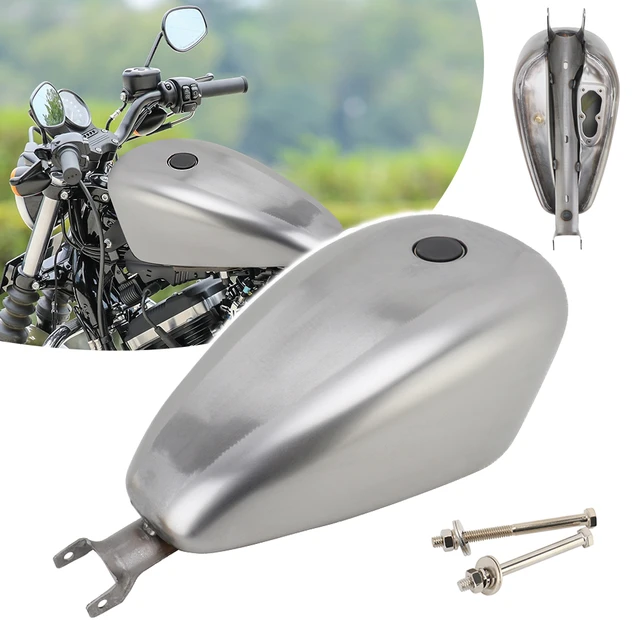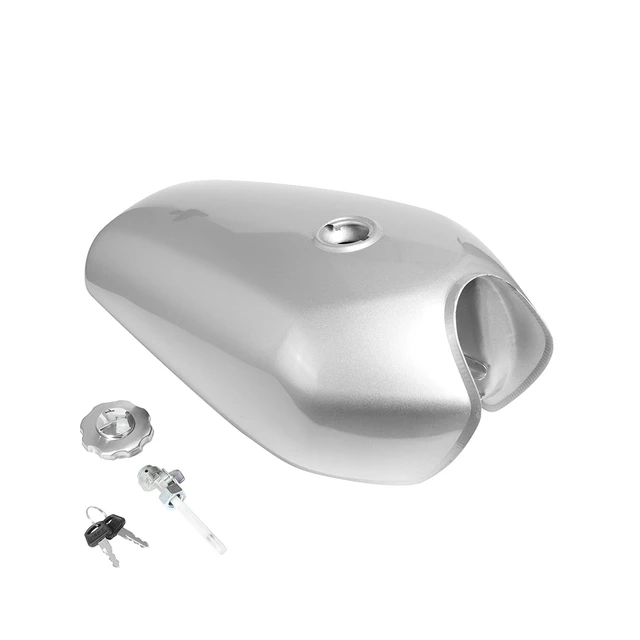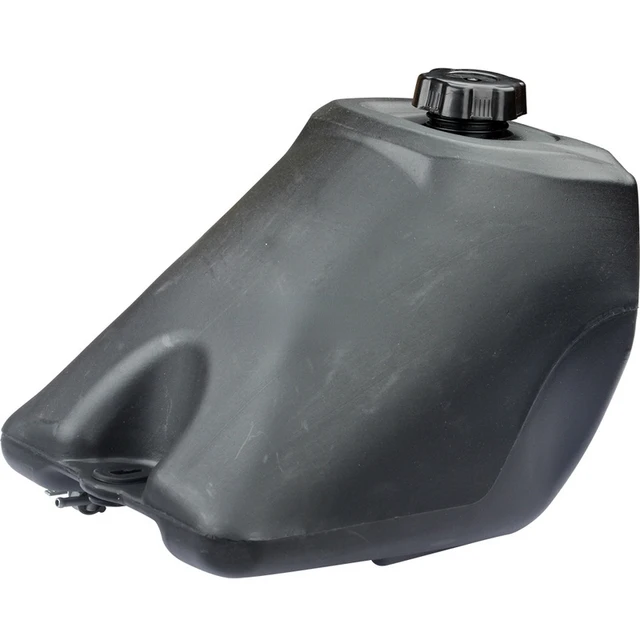Rust in a motorcycle gas tank can cause a multitude of issues, from clogged fuel lines to poor engine performance. For motorcycle enthusiasts, knowing how to remove rust from a motorcycle gas tank is crucial for maintaining the bike’s performance and longevity. This article will provide a comprehensive guide on removing rust from a motorcycle gas tank, including essential tools, step-by-step instructions, and tips to prevent future rust formation.
Assessing the Rust Damage
Before diving into the rust removal process, it’s essential to assess the extent of the damage to determine the best course of action.
Visual Inspection
Start by removing the gas cap and using a flashlight to inspect the inside of the tank. Look for rust spots, corrosion, and any other signs of damage. This initial inspection helps you gauge how severe the rust issue is and plan your approach accordingly.
Evaluating the Severity
Determine if the rust is surface-level or if it has penetrated deeper into the metal. Surface rust can be treated easily, but severe rust may require more intensive methods or even professional intervention. Understanding the severity allows for a more targeted and effective rust removal approach.
Planning the Procedure
Based on your assessment, decide whether to proceed with a DIY rust removal method or seek professional help. This decision is crucial for effectively addressing the rust problem without causing further damage to the tank.
Gathering Necessary Tools and Materials
Having the right tools and materials on hand can make the rust removal process smoother and more efficient.
Required Tools
You’ll need tools such as wrenches, pliers, and screwdrivers to remove the gas tank from the motorcycle. Additionally, a flashlight and inspection mirror will aid in your initial assessment. Proper tools ensure that the disassembly and reassembly processes are safe and efficient.
Cleaning Agents
Various cleaning agents can help remove rust. Common options include vinegar, baking soda, and commercial rust removers. Choosing the right cleaning agents based on the severity of rust ensures effective removal and minimal damage.
Safety Gear
To protect yourself during the rust removal process, wear safety gear such as gloves, safety goggles, and a mask. These precautions are essential to avoid any injuries or exposure to harmful chemicals.
Draining the Gas Tank
Removing all fuel from the tank is the first practical step in the rust removal process.
Safety Precautions
Ensure you’re working in a well-ventilated area away from any open flames or sparks. Gasoline is highly flammable, and proper safety measures are crucial to prevent accidents.
Draining Process
Use a siphon pump to remove the gasoline from the tank, or tilt the tank and let the fuel drain into a suitable container. Make sure to dispose of the old gasoline properly, following local regulations. Effective fuel removal ensures a safer and more thorough cleaning process.
Removing the Gas Tank
Detaching the gas tank from the motorcycle allows for more effective rust removal.
Disconnecting Fuel Lines
Carefully disconnect the fuel lines, making note of where each line connects for easier reassembly. Use wrenches or pliers as needed, and be gentle to avoid damaging any components.
Unbolting the Tank
Use the appropriate tools to remove bolts or screws securing the gas tank to the motorcycle frame. Keep track of all fasteners and components to ensure a smooth reinstallation process. Proper removal of the tank enables a more controlled and thorough cleaning.
Lifting the Tank
Once all connections and fasteners are removed, carefully lift the gas tank from the frame. Pay attention to its weight and balance to prevent spills or accidents. Proper handling minimizes the risk of damage during the cleaning process.
Interior Cleaning Process
Various methods can effectively remove rust from the interior of the gas tank.
Using Vinegar and Baking Soda
One of the most popular methods involves filling the tank with white vinegar and letting it sit for several hours or overnight. The acidity of the vinegar helps dissolve the rust. After soaking, add a handful of baking soda to neutralize the acid and create a foaming action that loosens the rust further.
Shaking with Abrasive Materials
For stubborn rust, add a mixture of gravel, nuts, or bolts into the tank along with the vinegar solution. Seal the tank and shake it vigorously. The abrasive materials will help scrub away the rust from the interior surfaces. This method is particularly effective for removing heavy rust deposits.
Commercial Rust Removers
Commercial rust removers, available at auto parts stores, can be highly effective. Follow the manufacturer’s instructions for the best results. These products are formulated to target rust and often provide quicker results compared to homemade solutions.
Flushing and Rinsing
After the rust has been loosened and dissolved, thorough flushing and rinsing are essential.
Rinsing with Water
Flush the tank with warm water to remove all cleaning agents, rust particles, and debris. Repeat this process several times until the water runs clear, ensuring that no contaminants remain inside the tank.
Using a Degreaser
For an extra level of cleanliness, rinse the tank with a degreaser solution. This step helps remove any lingering residue and prepares the tank for reinstallation. Proper rinsing ensures that no cleaning agents remain that could harm the motorcycle’s performance.
Drying the Tank
Thoroughly dry the inside of the gas tank to prevent new rust from forming. You can speed up the drying process by using a hairdryer or heat gun set to a low temperature. Ensure the tank is completely dry before proceeding to the next steps.
Inspecting for Remaining Rust
A final inspection helps ensure that all rust has been removed from the tank.
Using a Flashlight
Shine a flashlight into the tank to check for any remaining rust spots or debris. This detailed inspection allows you to identify any areas that may require additional cleaning.
Repeat Cleaning if Necessary
If rust remains, repeat the cleaning process using the same or a different method for the remaining spots. Persistence in cleaning ensures a completely rust-free tank.
 Preventing Future Rust
Preventing Future Rust
Taking steps to prevent rust can extend the life of your gas tank and improve your motorcycle’s performance.
Fuel Stabilizers
Add a fuel stabilizer to your gas tank, especially if you plan to store your motorcycle for an extended period. Fuel stabilizers help prevent rust and corrosion by minimizing moisture buildup inside the tank.
Keeping the Tank Full
A full gas tank leaves less room for moisture to accumulate, which can lead to rust formation. Try to keep your tank full, especially during storage periods, to minimize the risk of rust.
Regular Inspections
Periodically inspect the inside of your gas tank for any signs of rust or corrosion. Early detection allows you to address the issue before it becomes severe, ensuring the longevity of your gas tank.
Reinstalling the Gas Tank
Reinstallation must be done carefully to ensure the motorcycle operates correctly.
Reconnecting Fuel Lines
Reconnect the fuel lines to their appropriate positions, making sure each connection is secure and free from leaks. Proper reconnection ensures efficient fuel flow and prevents operational issues.
Securing the Tank
Use the screws or bolts you removed earlier to secure the tank back onto the motorcycle frame. Ensure all fasteners are tightened appropriately to avoid any movement or vibrations during riding.
Testing for Leaks
After reinstalling the tank, fill it partially with gasoline and check for any leaks. Tighten connections as necessary to ensure a secure and leak-free tank. A thorough leak test ensures safe operation before hitting the road.
Professional Help
Although this guide provides detailed steps, sometimes professional help is necessary.
When to Seek Professional Assistance
If the rust is severe or if you’re not comfortable performing the cleaning process yourself, it’s best to seek professional help. Professionals have specialized tools and expertise to address significant rust issues effectively.
Professional Services
Professional services can provide thorough cleaning, coating, and rust prevention treatments that may not be achievable with DIY methods. Engaging professional services ensures comprehensive maintenance and peace of mind.
Conclusion
Knowing how to remove rust from a motorcycle gas tank is an invaluable skill for maintaining your bike’s performance and longevity. By following the detailed steps provided and taking preventive measures, you can keep your gas tank clean and rust-free, ensuring a smoother and safer ride. This knowledge empowers you to take proactive care of your motorcycle, enhancing both its lifespan and your riding experience.


